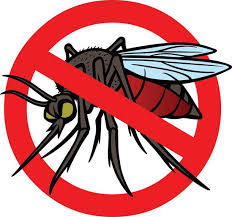Fact box: National Strategic Plan for Malaria Elimination
The Union Health Ministry and Family Welfare for first time has unveiled National Strategic Plan (NSP) for Malaria Elimination (2017-22). It has set malaria elimination deadline as 2027, three years ahead of the global deadline.
The NSP is based on 2016 National Framework for Malaria Elimination framed with support of WHO’s Global Technical Strategy for Malaria, 2016-2030.
Features of the Plan
The NSP is a year-wise roadmap for malaria elimination across the country. The plan aims to achieve universal case detection and treatment services in malaria endemic districts to ensure 100% diagnosis of all suspected cases, and full treatment of all confirmed cases. It seeks to maintain a malaria-free status for areas where transmission has been interrupted.
Categorisation of Districts: The plan divides country into four categories, from 0 to 3 based on their annual parasite incidence (API). The first category, Zero has 75 districts having of API of malaria for the last three years. The Category 1 covers 448 districts, in which the API is less than 1 per 1,000 population.
The Category 2 covers 48 districts, in which API is one and above, but less than 2 per 1,000 population. The Category 3 covers 107 districts, in which API of two and above per 1,000 population.
Targets: The plan aims to eliminate malaria (zero indigenous cases) in all Category 1 and 2 districts by 2022. In Category 3, the target is bring remaining districts under a pre-elimination and elimination programme by 2022.
Four components, based on recommendations WHO: Diagnosis and case management; surveillance and epidemic response; prevention — integrated vector management; cross-cutting interventions, which include communication, advocacy, R&D and other initiatives.
Funding: The resources required for the elimination of malaria is around Rs 10,653.16 crore over a period of five years (2017-2022). These resources will be managed from government sources, international donors, and the corporate sector as part of corporate social responsibility (CSR).
Significance: This is for the first time, the Union Health Ministry has come up with a roadmap for elimination of malaria in the country. Prior to it, effort was to “control” malaria under the National Vector Borne Disease Control Programme (NVBDC). The NSP lays down detailed strategy with operational guidelines for all states towards set targets. It has also given a detailed breakdown of annual budgetary requirements over five years.
Background
Malaria is a vector borne disease caused by parasitic protozoans belonging to the Plasmodium type. It is most commonly transmitted by an infected female Anopheles mosquito. According to the World Malaria Report 2016, India accounts for 89% of the incidence of malaria in the South-East Asia region.
In India, malaria is caused by the parasites Plasmodium falciparum (Pf), found more in the forest areas and Plasmodium Vivax (Pv), more common in the plains. Most malaria cases are mainly concentrated in tribal and remote areas of the country.
The majority of malaria reporting districts are in India’s eastern and central parts. Six states — Odisha (40%), Jharkhand (20%), Chhattisgarh (20%), Meghalaya, Arunachal Pradesh and Mizoram (5-7%) report most of the malaria cases in India. These states, along with tribal areas of Madhya Pradesh and Maharashtra account for 90% of India’s malaria burden.
Month: Current Affairs - July, 2017





